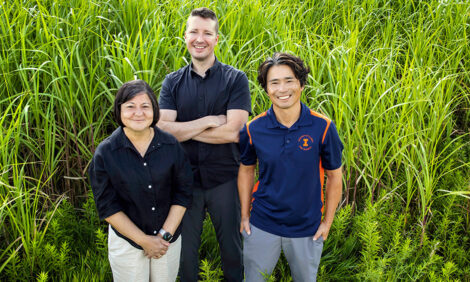



Rise of the Non-Cow Dairy
GLOBAL - Food research and processing experts are striving to improve how milk from species other than cows is treated with the view to growing the sheep and goat dairy industries.Issues surrounding heat treatment of non-cow milk was discussed at an International Dairy Federation (IDF) symposium on small ruminant milk in Cyprus this week.
Delegates learned NIZO food research is looking into high pressure processing and pulsed electrical fields for treating milk.
Addressing the symposium, Thom Huppertz, a principal scientist at NIZO said: “Such innovations can enable retention of desirable biological activities that would be lost during thermal processing or creation of novel structures.
“It is crucial for the success of such applications that the leading aim is benefit to the product rather than development of a specific technology.”
For the IDF, sheep and dairy goats benefit human nutrition and industry sustainability.
“Non-cow milk production is growing constantly,” said Director General, Dr Nico van Belzen.
“We’re committed to support the further development of this sector in an effort to improve a diverse and sustainable dairy industry and deliver nutritional and healthy products to consumers all over the world.”
However, consumers experiencing problems drinking cow appear unlikely to find sheep or goat milk a posisble alternative.
In 2012, the British Dietetic Society told mothers, “other mammalian milks are not suitable because children who are unable to tolerate cow’s milk are at high risk of allergic reaction to other mammalian milks.”
But the distinction between sheep and goats has been drawn clearly by the Food and Agriculture Organisation (FAO), with goats underlined as high milk producers, earning them the handle of “the poor man’s cow”.
Most goat breeding programmes are in Europe and the US, far away from the developing countries where dairy goats are more widely seen, according to the FAO.
Within Europe, the FAO says the Mediterranean region is globally significant for both goat and sheep dairying.
Elsewhere, Asia and North Africa are major small ruminant regions, specifically India and Pakistan. Sheep account for over seven per cent of milk output in North Africa and the Near East, the FAO added.
FAO data shows China, Turkey and Greece as big sheep areas.
Compared to dairy cows, goats have a flatter lactation curve, which the FAO says can have two peaks due to seasonal fluctuations in feed availability.
This is due to the “unfavourable climatic conditions” under which goats are usually kept.
Commenting on small ruminant dairy systems, the FAO said: “They are the dairy animals of the poor because of the lower capital investment and production costs required.”
Shorter gestation periods and lower milk quantities make them more suitable for household consumption, the FAO added.
Michael Priestley
News Team - Editor
Mainly production and market stories on ruminants sector. Works closely with sustainability consultants at FAI Farms



